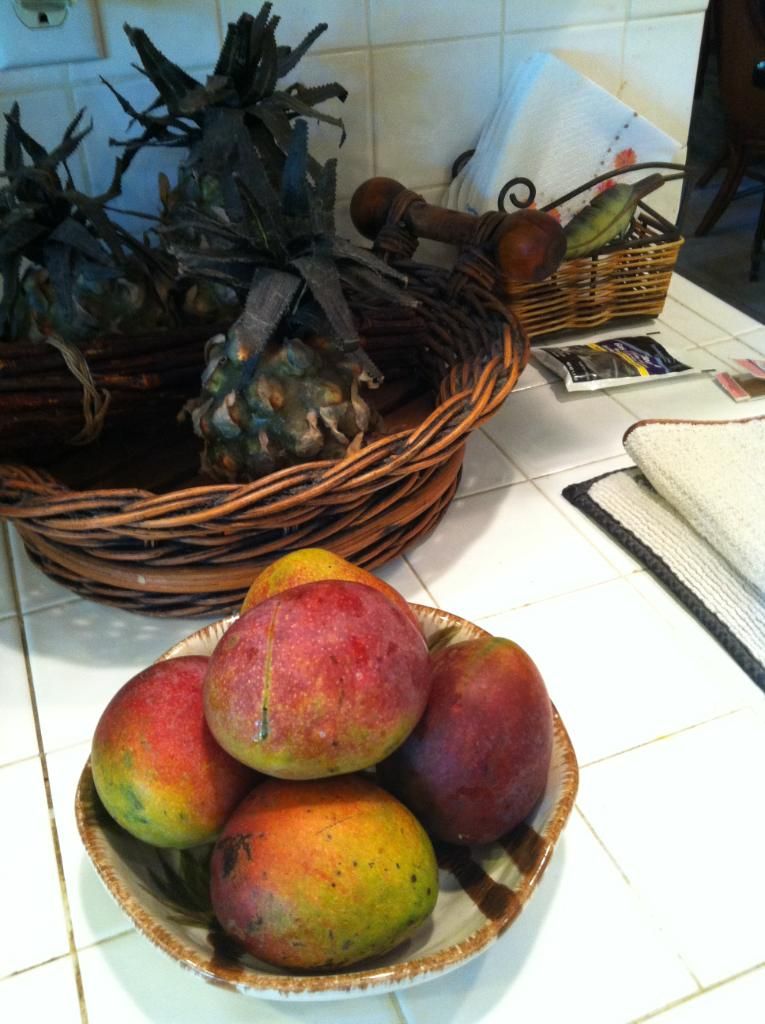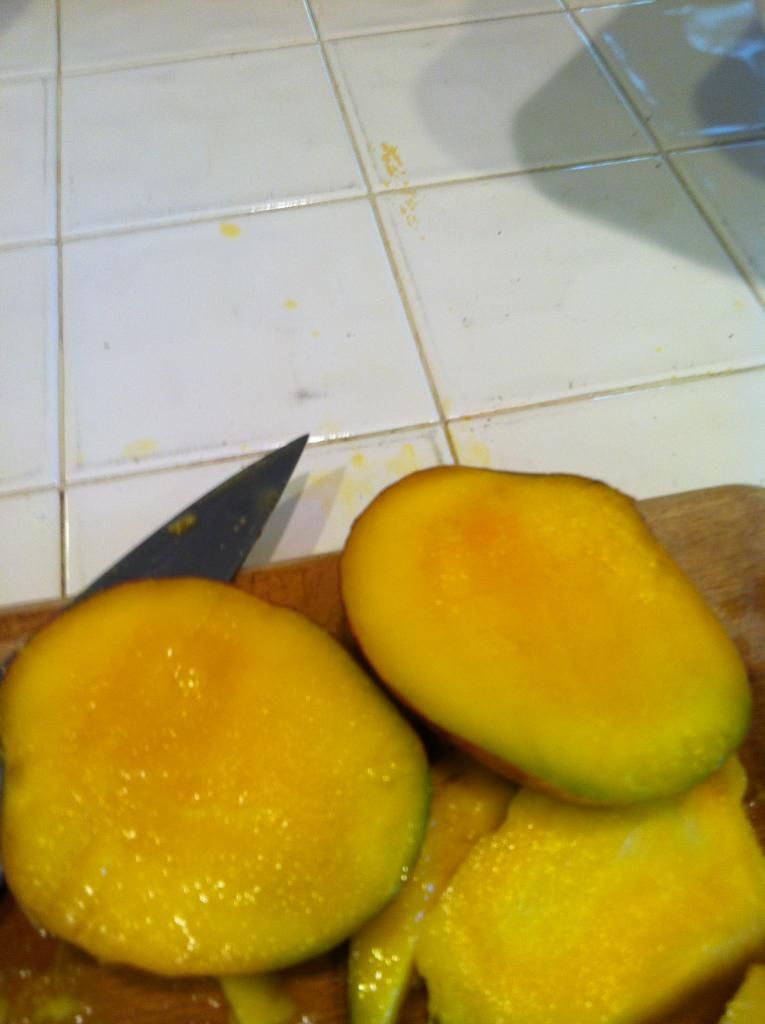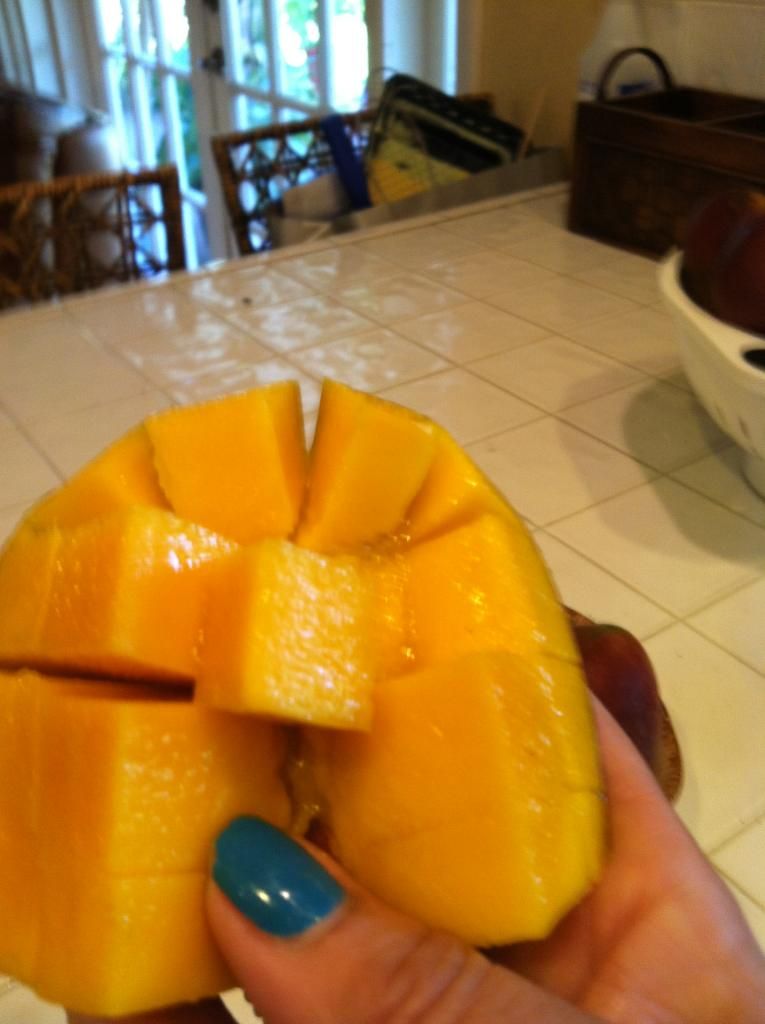http://www.fairchildgarden.org/Events/?date=07-2012&eventID=599
Dr. Richard Campbell is the curator of Fairchild Gardens and responsible for many of the different varieties of mango introduced into South Florida. Each year he gives his opinion and selection of mangos to choose from, which is how I started my collection. The five varieties that I chose for my yard are the Lancetilla, Parven, Rosigold, Neelum and Mallika. My favorite South Florida mango is the Florida Red which is a graft from the Kent. Sadly I do not have that variety in my yard. I don’t think I could possibly fit another mango tree in my yard but I will have to see. My Lancetilla tree which is supposed to produce fruit in late August and September, has produced fruit early again this year. The original tree is believed to have been the result of a cross between the 'Saigon' and 'Mulgoba' varieties by Wilson Popenoe, grown on his property in Lancetilla, Honduras on the north coast of Honduras.
'Lancetilla' was introduced to the United States via South Florida and first received notoriety at the Fairchild Botanical Garden's 2001 Mango Festival. The tree was promoted as a dooryard variety in Florida due to its excellent disease resistance and flavor, and is now widely sold as nursery stock in the state. The fruit is very large, with mangos from 2 to 7 lbs.
I am starting to question whether my Lancetilla mango tree is actually a Lancetilla. Could it have been mislabeled at the Mango Festival years ago? I think there is a distinct possibility. My tree produces fruit early and most mangos are small, averaging ounces not pounds. I would have to maybe bring some fruit down to Fairchild Farm and see if they could identify it, because although it is very sweet and delicious with very little fiber, I am really sure it is not a Lancetilla. It really doesn’t matter because the fruit is delicious, although what attracted me to the tree was the fact that the mangos were supposed to be huge and it was a late producer.

Through the years I’ve loved cooking with mangos. Some of my traditions are making mango chutney, jelly, and breads etc. One year my husband and I actually made Mango wine. It was quite a process but we really enjoyed the experience. We ended up bottling 21 bottles of very delicious mango wine. I think it is something we should try again. We bought all the equipment and it has been sitting up in the attic for many years. I’ve been wanting to take it all down from the attic to see what shape the equipment is in. Hopefully someday soon I’ll be making Mead.
Well, last evening I made Mango Chutney. I used the mangos from my questionable Lancetilla tree. The mangos were sweet as sugar. The key to good chutney is getting just the right combination of sweet and spicy. This year’s chutney turned out pretty spicy! The grocery store didn’t have any habanera peppers so my husband bought Scotch Bonnet. Here is the recipe below. I think this year I am going to enter it in the Mango Festival. I love to use my chutney on pork roast cooked on the grill. I hope you enjoy the recipe.
 |  |
 |  |
 |  |
Florida Mango Chutney
- 4 cups mango, peeled and thinly sliced
- 2 ½ cups white sugar
- 1 cup brown sugar
- 1 cup apple cider vinegar
- ½ cup golden raisins
- ¼ cup ginger finely chopped (I used fresh)
- 1 large red onion
- 4 tablespoons garlic minced
- 1 tsp salt
- 1 teaspoon ground cloves
- 1 teaspoon ground Allspice
- 1 teaspoon Cinnamon
- 1 teaspoon nutmeg
- 2 small fresh hot peppers finely chopped seeds removed. (I used Scotch Bonnet)
I actually double this recipe. Place all ingredients in a large pot. Simmer for several hours. I let mine simmer for approximately 3 hours. Stir frequently! At two hours if the chutney has not reduced by almost half continue to simmer slowly. The chutney should thicken in the jars. Hopefully!

No comments:
Post a Comment